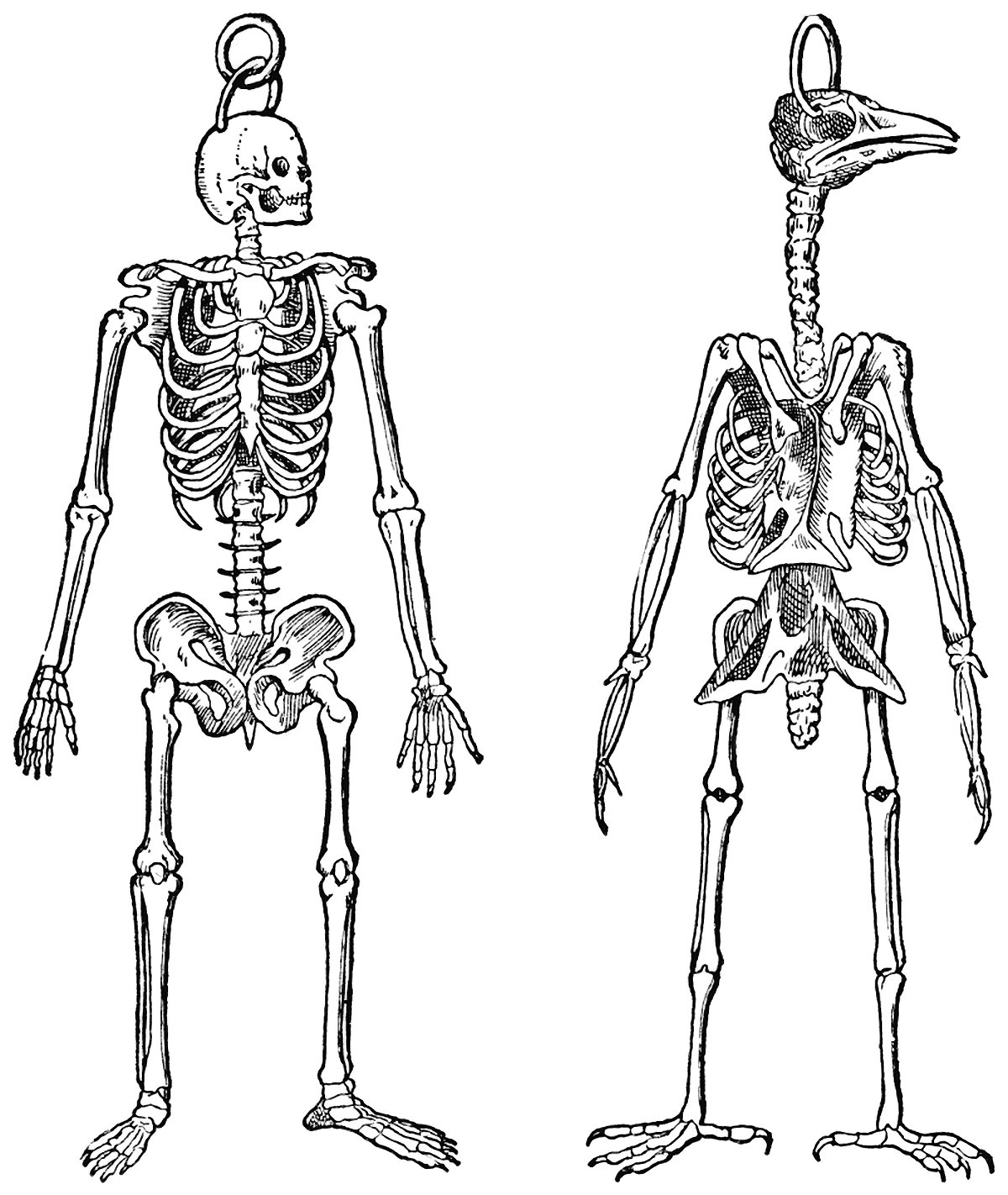The Skeletons of a Man and Bird
Illustration from an article by Samuel P. Langley comparing the skeletons of a man and a bird. Langley was arguing that both skeletons are made from the same elements and asking whether a bird is the proper inspiration for a flying machine.[1]
The main factor that sets humans apart from our closest living relatives is our bipedal bodies. We walk upright on two legs, which gives us a different perspective on our surroundings. Because of this, we live lives based on verticality and we seek to escape the surface of the earth. Birds have evolved to have the ability to escape the surface, and we’ve looked to them in envy since time immemorial.
Pictured above is a comparison between the skeleton of a human and a bird. What I find fascinating about this image is the choice of the artist to position the bird in a bipedal stance. I suspect this was done just to ease the comparison, but in a way it undermines the birds power of flight. This is an animal who is at home when in the open air, but here the bird is shown with its feet firmly planted on the ground, much like a human. The playing field has been leveled, so to speak, which puts the bird at a specific disadvantage.
The human skeleton has (mostly) evolved to handle the structural requirements of an upright posture.[2] Our hip, leg and foot bones have grown and adjusted over time to handle the increased weight put on them. Likewise, our shoulders and arms have shrunk because we no longer need them to move about on the ground. In the birds case, its skeleton hasn’t evolved to handle these loads, so an upright posture would be quite troublesome. Pound for pound, a bird has much stronger shoulder and arm muscles so it can fly. I’ve previously written about why humans can’t fly under our own strength, and this is the main reason. We’ve evolved to walk upright on the surface of the earth, while birds have evolved to fly above the surface.
Check out other posts dealing with anthropology here.
[1] : Illustration originally published in Langley, S. P. (1897). “The New Flying-Machine.” The Strand Magazine, XIII (January to June), 706–719.
[2] : Our skeletons are still evolving in this sense, and our spines haven’t fully adapted to an upright posture yet. This is why back pain and poor posture are so common in older adults.

